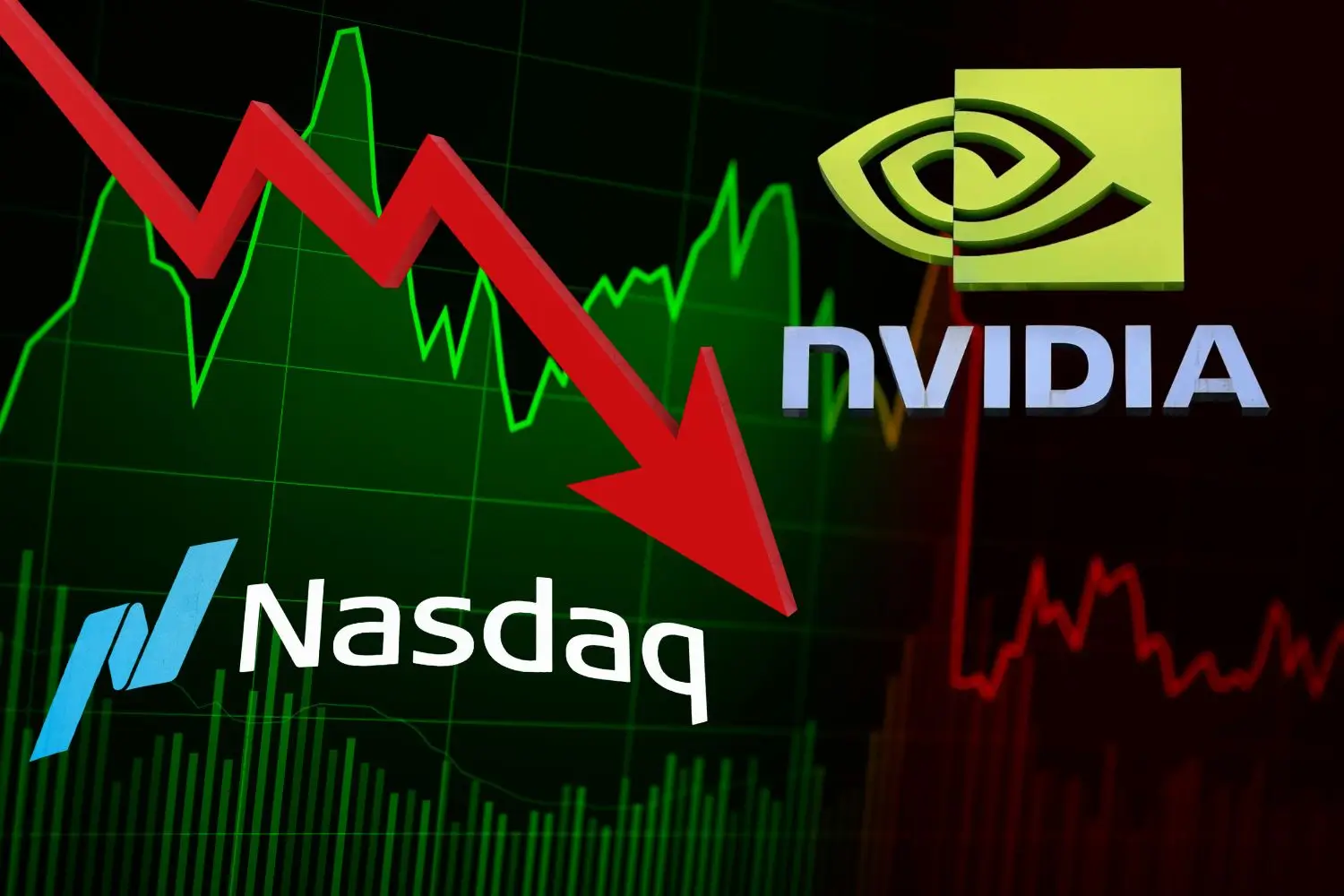Share
Wall Street Rallies: Dow Hits New High as Nvidia Pulls the Nasdaq Lower
12 tháng 11 2025
The Dow Jones surged over 550 points to a record close amid optimism that Washington will soon end the historic government shutdown. Meanwhile, Nvidia’s decline weighed on the Nasdaq as tech stocks faced renewed pressure.

Wall Street Ends Mixed Amid Sharp Sector Divergence
U.S. stocks closed on a mixed note Tuesday, reflecting investors’ divided sentiment toward the market’s near-term direction.
The Dow Jones Industrial Average (DJI) jumped over 550 points, or 1.2%, setting a new all-time closing high, while the Nasdaq Composite (IXIC) slipped 0.2% and the S&P 500 (GSPC) edged up 0.2%.
The Dow’s rally was driven by growing optimism that Washington is moving closer to ending the record-breaking 41-day government shutdown, which has disrupted economic activity and data releases for more than a month.
However, while industrial and financial stocks climbed, the tech-heavy Nasdaq faltered as investors began rotating out of high-valuation names.
Nvidia Tumbles as AI Frenzy Faces Reality Check
The spotlight once again fell on Nvidia (NVDA), the flagship stock of the global AI boom.
Shares of the chipmaker fell 2.5% after SoftBank Group (SFTBY) revealed it had sold its entire stake in Nvidia to raise funds for its own artificial intelligence initiatives.
The move sparked debate over whether the AI euphoria is cooling, as investors reassess lofty valuations across the tech sector.
The drop in Nvidia shares rippled across the semiconductor and AI infrastructure space.
CoreWeave (CRWV), an Nvidia-backed cloud computing firm, tumbled 15% after cutting its full-year revenue forecast, citing delays from a key data center partner.
Analysts viewed the developments as early signs that the AI sector may be entering a “reality phase” following months of exuberance.
Political Progress Fuels Optimism in Washington
Adding to investor confidence, the U.S. Senate late Monday passed a temporary funding bill, setting the stage for a House vote later this week that could reopen the federal government after its longest shutdown in modern history.
Markets cheered the progress, viewing it as a step toward restoring the flow of official economic data that the Federal Reserve relies on to gauge the path of monetary policy.
Still, economists cautioned that any tangible impact will take time — it could be weeks before delayed reports on inflation, employment, and consumer activity are released, leaving investors in a holding pattern.
Labor Market Data Suggests Cooling Momentum
With official reports paused, traders turned to private data for guidance.
According to ADP’s latest survey, U.S. private companies shed an average of 11,250 jobs per week in October, signaling that the labor market is losing momentum.
The figures supported the view that the U.S. economy is cooling after an extended tightening cycle, potentially reducing pressure on the Federal Reserve to keep raising interest rates.
Market expectations now lean toward the Fed holding rates steady at its next meeting, while some analysts anticipate that rate cuts could begin as early as the first quarter of next year if upcoming data confirms a slowdown.
U.S.–China Trade Tensions Resurface Over Rare Earths
Beyond domestic politics, U.S.–China trade friction returned to the forefront.
According to a Wall Street Journal report, Beijing plans to restrict exports of rare earth minerals to U.S. military contractors, while simultaneously accelerating supplies to civilian American buyers.
The move reflects China’s intent to safeguard strategic materials while keeping its commercial trade channels open.
Analysts warned that any restriction on rare earth exports could have wide-ranging consequences for the technology and defense industries, as these minerals are essential components in electronics, EV batteries, and precision weaponry.
A prolonged disruption could raise production costs and dampen investor sentiment toward tech manufacturing stocks.
Investor Sentiment: Optimistic but Cautious
Despite the day’s volatility, the broader market mood remained cautiously optimistic.
The record close of the Dow Jones underscored the resilience of traditional sectors such as industrials and finance, which are now attracting capital rotation from overheated technology names.
This sector rotation is widely viewed as a healthy adjustment that may sustain the market’s long-term uptrend.
However, the widening gap between the Dow and the Nasdaq signals that risks remain, particularly as investors balance political hopes with economic uncertainty.
If the House fails to pass the funding bill or if upcoming data reveals a deeper slowdown, a market pullback could follow swiftly.
Outlook: A Market at a Turning Point
The Dow’s new milestone highlights the underlying confidence still present in Wall Street, but the growing divergence among sectors suggests a period of rebalancing ahead.
Investors are reassessing the risk-reward tradeoff between high-growth tech and stable-value sectors like finance, industry, and consumer staples.
In the near term, several macro conditions appear to be improving — progress in Washington, cooling labor data, and expectations of a steady Fed stance.
If these trends continue, analysts believe U.S. equities could extend their rally into year-end, potentially lifting sentiment across global markets.
FAQs
1. Why did the Dow Jones rise while the Nasdaq fell?
→ The Dow’s strength came from industrial and financial stocks benefiting from hopes of a government reopening, whereas the Nasdaq was dragged down by weakness in tech shares.
2. What does SoftBank’s sale of Nvidia shares indicate?
→ It signals that major investors may be rebalancing exposure after significant AI gains, potentially marking a cooling phase in the sector’s speculative momentum.
3. How does the U.S. government shutdown impact the market?
→ The shutdown delayed key economic data, clouding visibility for the Fed and investors. However, renewed political progress has helped stabilize sentiment.
4. What are the implications of China’s rare earth export restrictions?
→ Such curbs could disrupt U.S. defense and tech supply chains, leading to higher material costs and increased uncertainty in global manufacturing.
All information on our website is for general reference only, investors need to consider and take responsibility for all their investment actions. Info Finance is not responsible for any actions of investors.







